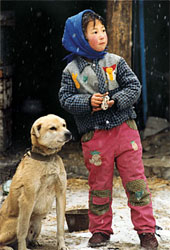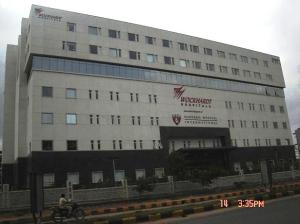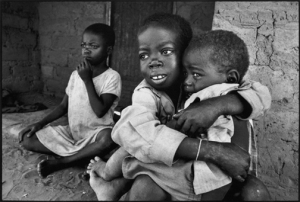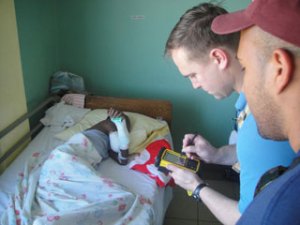
A garbage dump in Manila with scavengers at work
The slum of Bagong Silangan in Quezon City, Manila, is centered around a vast garbage tip on which many of the residents survive through scavenging. In this particular slum men, women and children are knee deep in slime every day looking for articles which they can sell for their recycling value. They inhabit miserable makeshift huts on the perimeter of the dump and scavenge the dump as almost a career since they have no money. Not only do these people not have access to health care because of their poverty, but they live in a very unhealthy environment because there are no laws to protect their health.
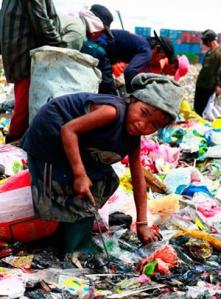
A young child working in a dump in Tondo
To paint a better picture, the dumps in the Philippines are huge mountains of garbage some even piled as high as seven stories. The scavengers are mostly women and children, many without shoes, walking in the trash to find things to sell. Many of them have bare feet that are just waiting to be protruded with broken glass, rusty nails, used syringes, and anything else that gets thrown away. In Tondo, Philippines Adults carry bags of trash into an abandoned warehouse. They sift through the garbage for food or recyclables, leaving the leftovers of others’ leftovers to rot while flies swarm, rats scurry about and their children play nearby.
The slums of the Philippines are some of the worst in the world and many things can and need to be done in order to protect the health of all of the individuals living in the slums consumed with garbage dumps. There are some church groups that allow Filipino women to use their kitchens in order to make things to sell, which replaces the need to scavenge. Also, some church groups provide free clinics once a year in order to improve the health of the slum residents, but large efforts need occur in order to make a significant impact on health improvement which are not in place.

Tondo Slum, residents are practically living on top of the garbage dump that is right next door

